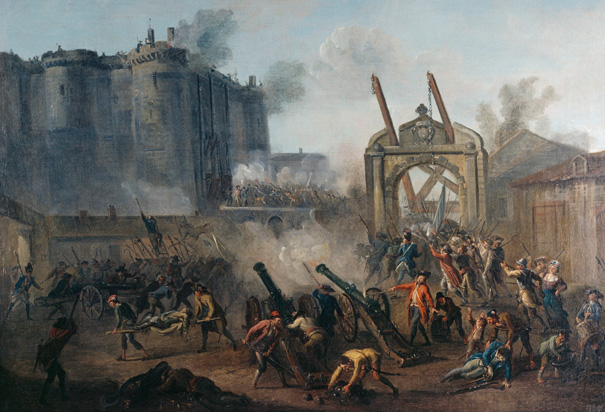Annotation:Destruction of the Bastile: Difference between revisions
No edit summary |
No edit summary |
||
| Line 10: | Line 10: | ||
<div style="text-align: justify; direction: ltr; margin-bottom: 90px; margin-left: 70px; margin-right: 120px;"> | <div style="text-align: justify; direction: ltr; margin-bottom: 90px; margin-left: 70px; margin-right: 120px;"> | ||
<br> | <br> | ||
'''DESTRUCTION OF THE BASTILE.''' Scottish, March (2/4 time). G major. Standard tuning (fiddle). AABBCAABB. The Bastille [http://en.wikipedia.org/wiki/Bastille] was the hated state prison used by the Kings of France that was stormed by an aroused populace in July, 1789. It's capture and eventual destruction became a potent symbol of the French Revolution. | '''DESTRUCTION OF THE BASTILE.''' Scottish, March (2/4 time). G major. Standard tuning (fiddle). AABBCAABB. The Bastille [http://en.wikipedia.org/wiki/Bastille] was the hated state prison used by the Kings of France that was stormed by an aroused populace in July, 1789. It's capture and eventual destruction became a potent symbol of the French Revolution. It was also the source of some considerable anxiety among the nobility of other countries in Europe, Britain included, lest the 'popular contagion' spread to their lands. [[File:bastille.jpg|670px|thumb|left|Storming the Bastille]] Watlen notes it was "Perform'd by Mr. King," referring to a member of the equestrian company at the Edinburgh circus in the 1791 season who specialized in dancing on horseback<ref>Kim Baston, "The Celebrated Circus Tunes: Music and Musicians in an Eighteenth-Century Circus", '''Popular Entertainment Studies, Vol. 9''', Issue 1-2, 2018, p. 9.</ref>. | ||
<br> | <br> | ||
</div> | </div> | ||
Revision as of 14:48, 28 April 2019
X:1 T:Destruction of the Bastile M:2/4 L:1/8 R:Country Dance Tune N:"Performed by Mr. King" Q:"Allegro" B:John Watlen - The Celebrated Circus Tunes (Edinburgh, 1791, p. 19) Z:AK/Fiddler's Companion K:G gg dd|B3d|GG AA|B/A/B/c/ B/A/B/c/|gg dd|B3d| GG AF|G2G2::dd BB|cc A2|dd BB|d/c/B/c/ A2| Bd/B/ A/B/c/A/|Bd/B/ A/B/c/A/|GG AF |G2 G2!End!:|| K:Gmin B2 AG|d3G|^FFGG|A^F D2| c3A|B3G|A2^F2|G2G2!D.C.!||

- ↑ Kim Baston, "The Celebrated Circus Tunes: Music and Musicians in an Eighteenth-Century Circus", Popular Entertainment Studies, Vol. 9, Issue 1-2, 2018, p. 9.
